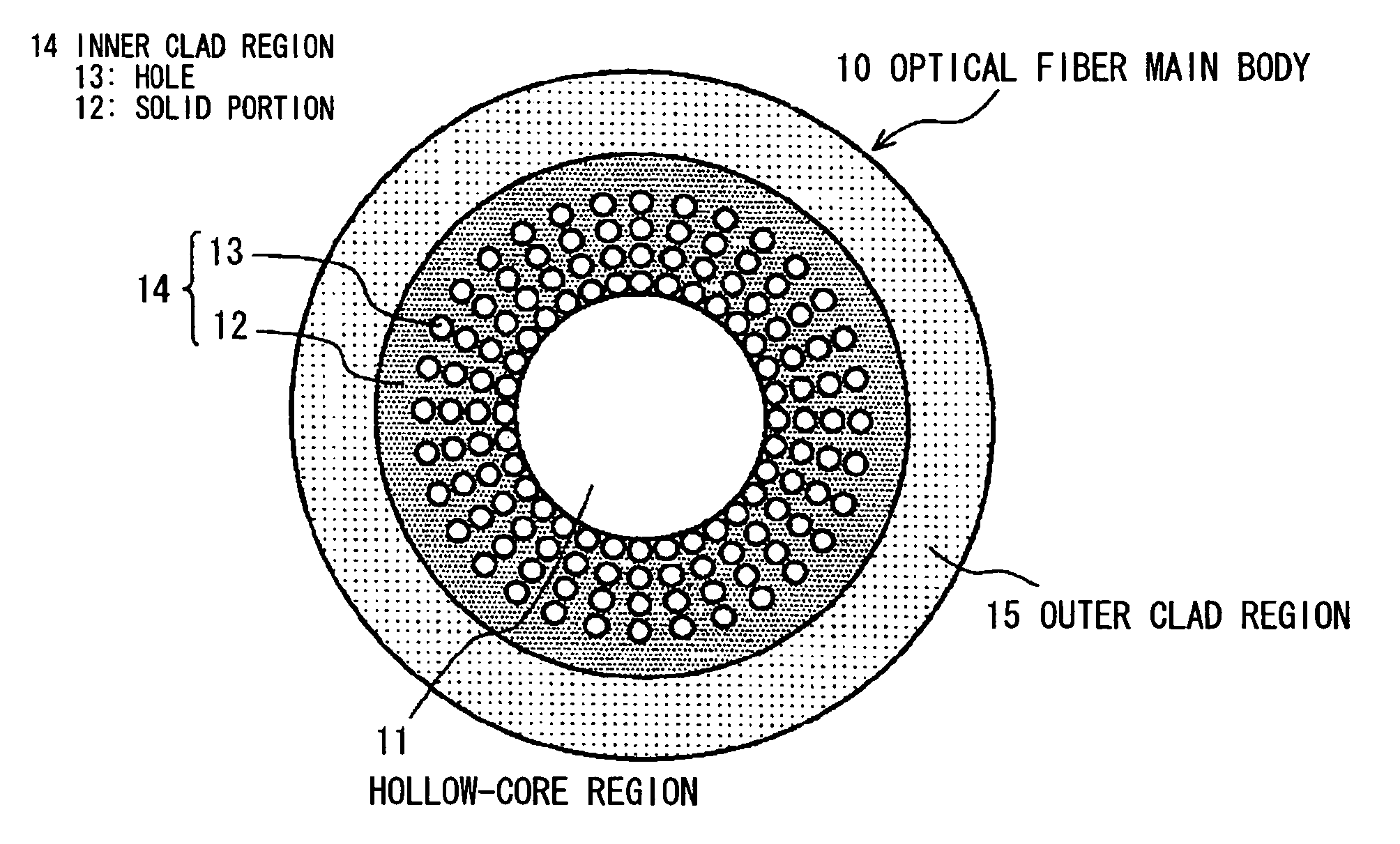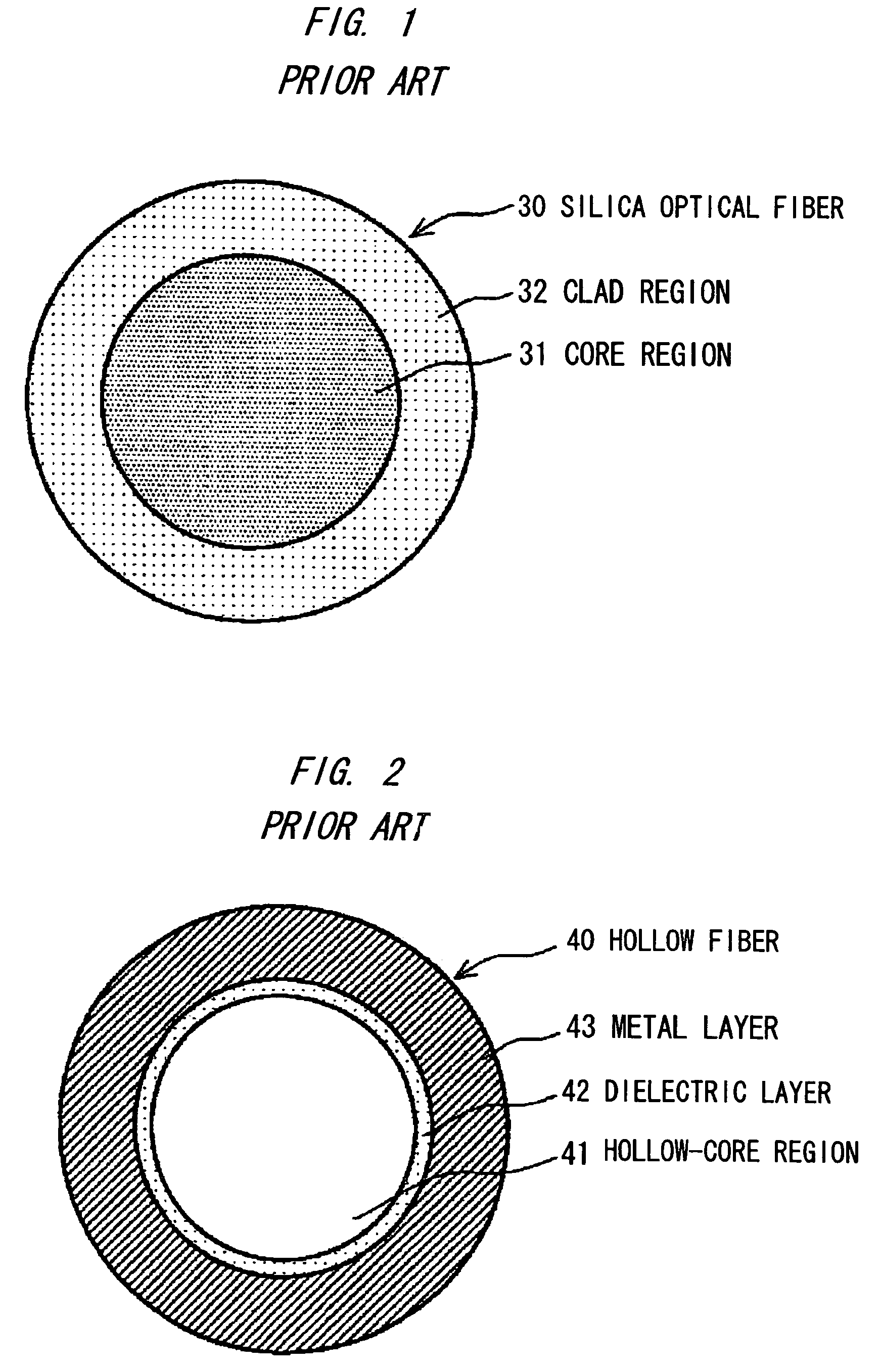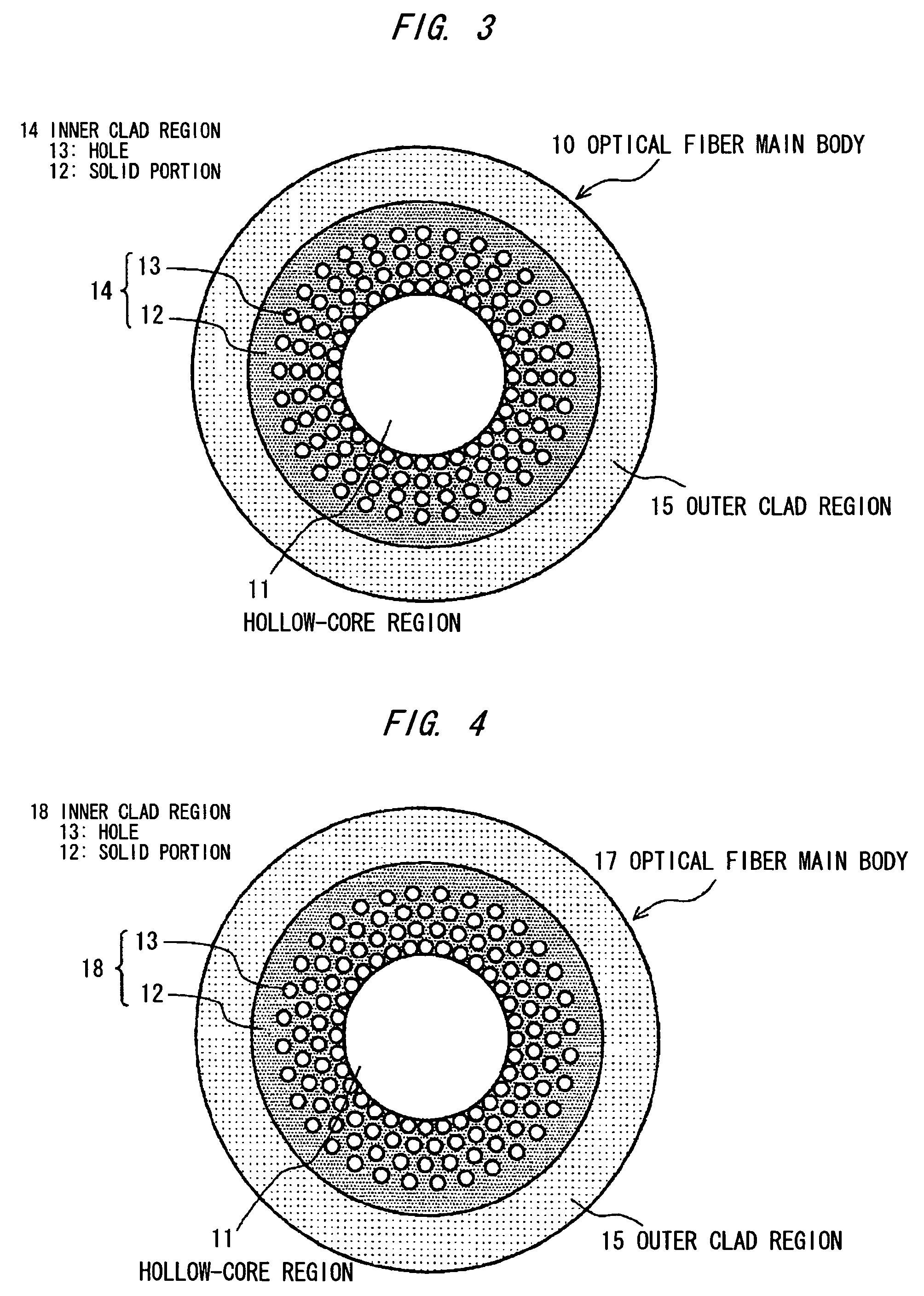Laser energy transmission optical fiber, laser energy transmission method and laser energy transmission device
a laser energy transmission and optical fiber technology, applied in the field of optical fibers, can solve the problems of optical fiber subjected to a limitation in the transmission capacity of laser energy and mechanical flexibility, the inability to transmit laser light in another wavelength band at a low loss, and the inability to achieve high peak power, low loss, and high breakage threshold
- Summary
- Abstract
- Description
- Claims
- Application Information
AI Technical Summary
Benefits of technology
Problems solved by technology
Method used
Image
Examples
first embodiment
[0050]FIG. 3 is a cross sectional view showing a laser energy transmission optical fiber in the first preferred embodiment according to the invention.
[0051]The laser energy transmission optical fiber of this embodiment is a hollow-core type optical fiber and comprises an optical fiber main body 10. In detail, as shown in FIG. 3, the optical fiber main body 10 comprises a hollow-core region 11, an inner clad region 14 formed surrounding the hollow-core region 11, and an outer clad region 15 formed surrounding the inner clad region 14. The hollow-core region 11 has an inside diameter greater than a wavelength of transmitted light. The inner clad region 14 has a solid portion 12 with plural holes 13 formed therein.
[0052]The plural holes 13 are arranged such that the holes are on plural concentric circles, the holes of same number are formed at equal intervals on each circle, and the holes are aligned in its radial direction. By thus arranging the holes 13, the inner clad region 14 can ...
second embodiment
[0064]FIG. 5A is a longitudinal cross sectional view showing a laser energy transmission optical fiber in the second preferred embodiment according to the invention. FIG. 5B is a cross sectional view cut along a line B-B in FIG. 5A, and FIG. 5C is a cross sectional view cut along a line C-C in FIG. 5A.
[0065]As shown in FIGS. 5A to 5C, the laser energy transmission optical fiber 20 of this embodiment comprises the optical fiber main body 10 as shown in FIG. 3 and a solid-core type optical fiber 21 of short length.
[0066]In the laser energy transmission optical fiber 20, the solid-core type optical fiber 21 of short length is fusion-bonded to one or both ends of the optical fiber main body 10.
[0067]The solid-core type optical fiber 21 comprises a solid-core region 25, and a clad region 26 formed surrounding the solid-core region 25. In order that the solid-core region 25 can have a refractive index higher than the clad region 26, the solid-core region 25 is made of pure silica and the ...
PUM
 Login to View More
Login to View More Abstract
Description
Claims
Application Information
 Login to View More
Login to View More - R&D
- Intellectual Property
- Life Sciences
- Materials
- Tech Scout
- Unparalleled Data Quality
- Higher Quality Content
- 60% Fewer Hallucinations
Browse by: Latest US Patents, China's latest patents, Technical Efficacy Thesaurus, Application Domain, Technology Topic, Popular Technical Reports.
© 2025 PatSnap. All rights reserved.Legal|Privacy policy|Modern Slavery Act Transparency Statement|Sitemap|About US| Contact US: help@patsnap.com



